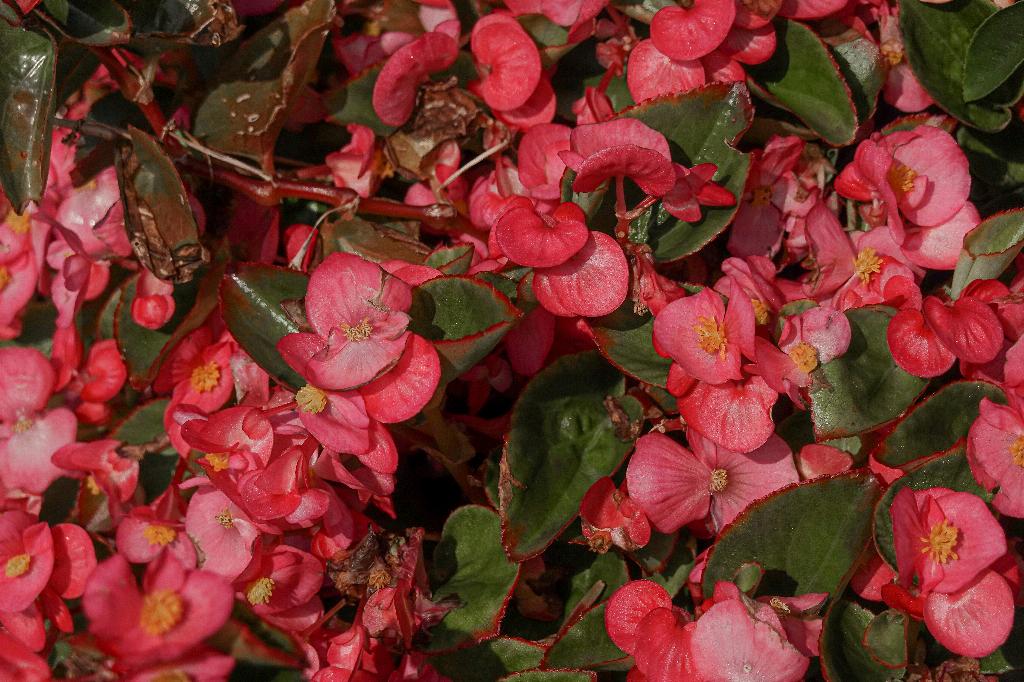When it comes to planting begonias outside, there are a few key factors to keep in mind to ensure success with these beautiful and delicate plants. Begonias are known for their vibrant colors and unique foliage, making them a popular choice for gardeners looking to add a touch of elegance to their outdoor spaces.
Understanding Begonias’ Sensitivity to Weather
It’s important to remember that begonias are quite sensitive to weather conditions, particularly frost, cold temperatures, and excessive moisture. These plants thrive in warm, humid environments and cannot tolerate temperatures below 45°F. Therefore, it’s essential to wait until all danger of frost has passed before planting begonias outdoors.
Choosing the Right Planting Location
When selecting a location to plant your begonias, opt for a spot that receives partial shade. Begonias prefer filtered sunlight or shade, as direct sunlight can scorch their delicate leaves. Additionally, ensure that the soil is well-draining to prevent waterlogging, as begonias are susceptible to root rot in soggy conditions.
Preparing the Soil for Begonias
Before planting your begonias, it’s beneficial to amend the soil with organic matter, such as compost or peat moss, to improve drainage and fertility. Begonias thrive in slightly acidic soil with a pH level between 6.0 and 6.5. Test your soil’s pH and make adjustments as needed to create an optimal growing environment for your begonias.
Planting Begonias Outdoors
When planting begonias in the garden, ensure that the soil is warm and workable. Dig a hole slightly larger than the root ball of the begonia plant and gently place it in the hole, covering the roots with soil. For begonias in containers, use a high-quality potting mix and ensure that the container has adequate drainage holes to prevent water stagnation.
Watering and Fertilizing Begonias
One of the key aspects of caring for begonias is maintaining proper watering and fertilization practices. Water begonias regularly, keeping the soil evenly moist but not waterlogged. Apply a balanced liquid fertilizer every two to four weeks during the growing season to promote healthy growth and vibrant blooms.
Protecting Begonias from Pests and Diseases
Keep an eye out for common pests such as aphids, mealybugs, and spider mites, which can damage begonia plants. Inspect your begonias regularly and treat any infestations promptly to prevent further damage. Additionally, be mindful of fungal diseases such as powdery mildew, which can affect begonias in humid conditions.
Deadheading and Pruning Begonias
To encourage continuous blooming, deadhead spent flowers from your begonias regularly. This not only improves the plant’s appearance but also redirects energy to new flower production. Additionally, prune back leggy or overgrown branches to maintain a compact and bushy growth habit in your begonia plants.
Overwintering Begonias
As begonias are sensitive to cold temperatures, it’s crucial to take precautions to protect them during the winter months. Consider digging up begonias from the garden before the first frost and overwintering them indoors in a cool, dry location. Alternatively, you can take cuttings from your begonias to propagate new plants for the following growing season.
Common Varieties of Begonias
There are numerous begonia species and cultivars available, each with its unique characteristics and growing requirements. Some popular types of begonias include tuberous begonias, rex begonias, and angel wing begonias. Explore different varieties to add diversity to your begonia collection and create stunning displays in your garden.

Conclusion
In conclusion, planting begonias outside can be a rewarding experience if done correctly. By understanding begonias’ sensitivity to weather, choosing suitable planting locations, and providing proper care and maintenance, you can enjoy the beauty of these exquisite plants in your garden. Remember to stay vigilant against pests and diseases, and take measures to protect begonias during the winter months for long-lasting blooms and foliage.
